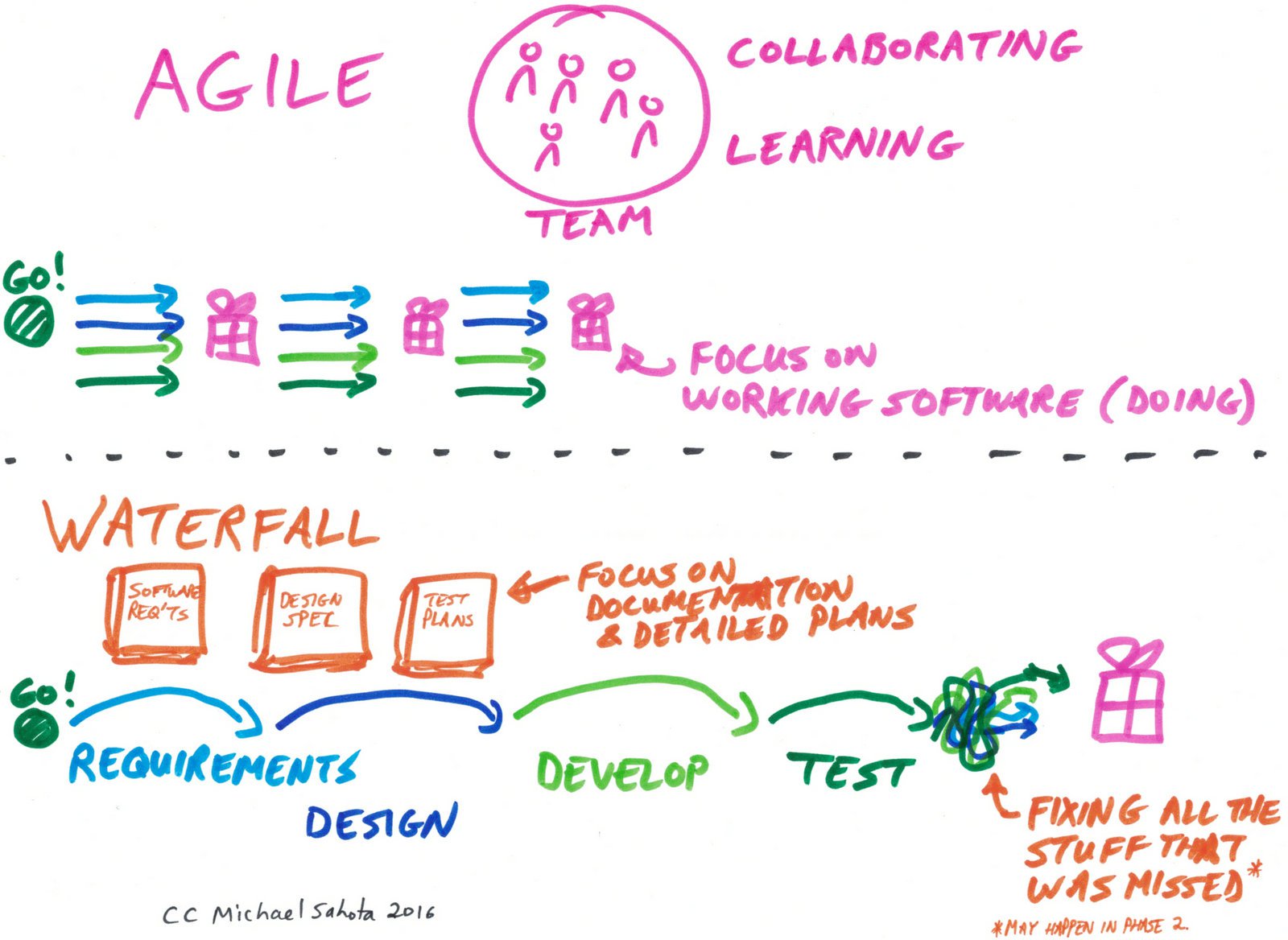
Agile is best suited for projects with high uncertainty levels, while traditional project management is better for projects with stable conditions. The choice between them often depends on the specific needs and constraints of the project. Has a rigid plan that is difficult to changeĬlearly defined before coding or implementationĭifference Between Agile Project Management and Traditional Project Management Uses longer project phases for planning and delivery. Allows for changes and adjustments throughout the project Uses short sprints for planning and delivery. Prioritizes following a strict plan and meeting project requirementsĮncourages face-to-face communication and collaboration
#Agile vs waterfall project management 2016 software
Prioritizes customer satisfaction and working software If you're wondering how is Agile planning different from traditional methods, then this comparison table will help you figure out the difference between Agile project management vs traditional project management: Agile Project Management vs Traditional Project Management It stresses customer satisfaction and uses available teams to fast-track software development at every stage. They are very well known for encouraging decision-making and preventing time consumption on variables that are bound to change.

Scrum and Kanban are two of the most widely used Agile frameworks. Adaptive planning is perhaps the top feature of Agile and one that makes it a favorite among project managers, worldwide. The basic concept behind Agile software development is that it delves into evolving changes and collaborative effort to bring out results rather than a predefined process. It is an iterative approach that focuses more on incorporating customer feedback and continuous releases with every iteration of a software development project. When a traditional system focuses on upfront planning where factors like cost, scope, and time are given importance, Agile Management Certification gives prominence to teamwork, customer collaboration, and flexibility. The rigidity of this method is the reason why it is not meant for large projects and leaves no scope for changing the requirements once the project development starts. Get to know more about the characteristics of project management. This approach assumes that time and cost are variables and requirements are fixed. The entire project is planned upfront without any scope for changing requirements. Each and every project follows the same life cycle which includes the stages such as feasibility, planning, designing, building, testing, production, and support, as shown in the figure above. Its concept depends on predictable tools and experience. The traditional Project Management (waterfall) approach is linear where all the phases of a process occur in sequence.

Overview of Agile and Traditional Project Management What is Traditional Project Management? Taking this course will aid you in enhancing your Agile learning. You can also get benefitted from Agile Certification. With that said, let us look at the difference and similarities between Agile Project Management vs traditional project management and how Agile vs traditional compare to each other. Both approaches also need risk management, quality management, and change management.

They make decisions to ensure the project stays on track and meets its goals. The project manager oversees and monitors the project in both Agile Management and traditional management. Agile and traditional project management are two different approaches to project management. It involves identifying and balancing the project's scope, time, cost, quality, and resources. Project management is the process of planning, communicating, organizing, adjusting, and managing resources.


 0 kommentar(er)
0 kommentar(er)
